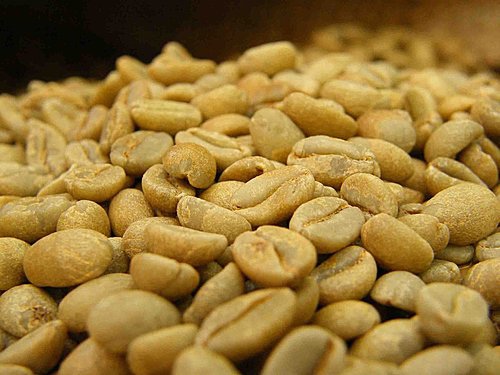Introduction to the whole process of coffee planting experience sharing from seedling stage to aging stage
Coffee growing experience sharing from seedling stage to senescence stage of the whole process introduction

Seedling stage: Seedling stage is a period from seed (or cuttings, grafting) germination to seedling nursery (nursery seedling stage), about 0.5-1.5 years. After coffee seeds are sown, cotyledons begin to emerge after a period of germination, about 30-100 days, and the length of time is highly correlated with temperature and humidity. After germination, cotyledon seedlings must be moved to nutrient bags for seedling cultivation, which takes 3-12 months to come out of the nursery.
Young tree period: young tree period refers to the period from planting to production, about 2-3 years. The main characteristic of this period is vigorous vegetative growth, 6-8 pairs of branches can be drawn every year, with roots, stems and leaves growing as the center, and the above-ground and underground parts expand rapidly to form ideal plant structure and prepare for production.
Production period: The initial production period refers to the period from the beginning of production to the arrival of abundance. During this period, coffee begins to enter reproductive growth, coffee trees grow vigorously, and nutrient demand is very large.
Rich period: 1-2 years after the initial period of maturity, coffee trees generally bloom in 3~4 years, about 2~3 months each year, appearance and smell similar to jasmine, flowering closely born in clusters, flowering 3~5 days. After flowering, they bear small green fruit, a few months later mature into red can be picked ripe fruit.
The ripe fruit skin is red, and due to its shape and color similar to cherries, mature coffee fruits are called coffee cherries in many places. Beneath the bright red exocarp are the pericarp, pulp, and a sweet, sticky yellow substance that encases the beans.
Properly managed, it lasts about 30 years.
Senescence period: the growth rate decreases year by year, the economic life is approaching the end, and the coffee tree indicates that it has entered the senescence period. Its life span is closely related to climate, soil and management level, and there are still century-old coffee trees that can bear fruit.
Important Notice :
前街咖啡 FrontStreet Coffee has moved to new addredd:
FrontStreet Coffee Address: 315,Donghua East Road,GuangZhou
Tel:020 38364473
- Prev

Make small notes by hand | what's the difference between coffee beans for hand-brewing coffee and coffee beans for coffee machines?
Communication of professional baristas Please pay attention to the water temperature in the coffee workshop (Wechat official account cafe_style). The best temperature is 95 degrees. There are two varieties of coffee, Arabica, the best, the earliest used by human beings, but it is not easy to take care of and is vulnerable to diseases and insect pests. The taste is light and elegant, the smell is the most fragrant, and it is planted at high altitude. The other is Robusta, found in West Africa.
- Next

How to understand the whole process of Coffee planting in Yunnan Province
How to understand the whole process of coffee planting in Yunnan seedling stage: seedling stage is a period from seed (or cuttings, grafting) germination to seedling emergence (nursery stage), about 0.5-1.5 years. After the coffee seeds were sown, the cotyledons began to be unearthed after a period of germination, about 30-100 days, and the length of time
Related
- Beginners will see the "Coffee pull flower" guide!
- What is the difference between ice blog purified milk and ordinary milk coffee?
- Why is the Philippines the largest producer of crops in Liberia?
- For coffee extraction, should the fine powder be retained?
- How does extracted espresso fill pressed powder? How much strength does it take to press the powder?
- How to make jasmine cold extract coffee? Is the jasmine + latte good?
- Will this little toy really make the coffee taste better? How does Lily Drip affect coffee extraction?
- Will the action of slapping the filter cup also affect coffee extraction?
- What's the difference between powder-to-water ratio and powder-to-liquid ratio?
- What is the Ethiopian local species? What does it have to do with Heirloom native species?

